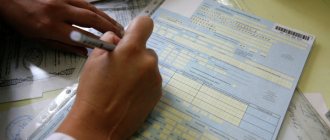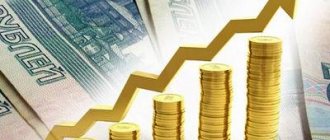Serious engineering communications, such as buildings and structures, as a rule, serve as fixed assets for a long time: years and decades. They slowly lose properties useful for use. But the concept of “long” is very vague. In each specific case, the useful life (USI) can vary greatly. How exactly to set this deadline and document it correctly, what points to pay attention to when regulating, read in this article.
Useful life of a fixed asset.
| In accordance with paragraph 1 of Art. 258 of the Tax Code of the Russian Federation after reconstruction, modernization or technical re-equipment, the useful life (USI) of a fixed asset (FA) can be increased, but within the limits established for the depreciation group in which this fixed asset was previously included [1]. | Articles on the topic: —Recovery from tax authorities of overpaid VAT. —How to reflect VAT in financial statements. —Higher arbitration of income tax disputes. |
The Ministry of Finance has been adamant for a long time: if the SPI of depreciable property has not changed after the completion of its modernization (reconstruction), the depreciation rate is not recalculated. According to officials, this norm is determined on the date of commissioning of the OS facility and does not subsequently change. And if so, the value of property that has increased after restoration work will not be fully transferred to the organization’s expenses before the expiration of the SPI. Meanwhile, many taxpayers (contrary to the opinion of the financial and tax departments) when calculating depreciation, take into account the remaining useful life of the asset after modernization (reconstruction), that is, they calculate depreciation evenly over the remaining service life. Obviously, in the latter case, the fixed asset depreciates faster, monthly depreciation will be higher, and, accordingly, taxable profit will be lower. Naturally, officials do not agree with this.
So what is the price of confrontation with regulatory agencies? In this article we will try to figure out whether the game is worth the candle. How much will the taxpayer gain by acting contrary to the official position of the departments?
The procedure for calculating monthly amounts of depreciation when applying the linear method of calculating depreciation is established by Art. 259.1 Tax Code of the Russian Federation. Based on paragraph 2 of this article, the amount of depreciation accrued for one month in relation to an object of depreciable property is determined as the product of its original (replacement) cost and the depreciation rate determined for this object.
Third depreciation group
Fixed assets, the operation of which is economically justified for 3-5 years (inclusive), are included in the third group. These are machines for agriculture and laboratory work, timber bulldozers, devices for sorting metals, sewing machines (exception: book stitching machines), vehicles with a carrying capacity of up to 500 kg, buses with dimensions up to 7.5 m, devices for determining the number of coins, banknotes, telephones, transformers and devices for detecting radio interference, tension, service dogs.
How to calculate the amount of depreciation after modernization.
How to calculate the monthly depreciation amount after reconstruction, modernization, or technical re-equipment of a fixed asset? There is some ambiguity on this issue; tax legislation does not provide a direct answer to the question posed. For convenience, we will refer to all of the above methods for restoring OS objects as upgrading.
What is possible and what is not: the opinion of regulatory authorities
Officials do not deny the possibility of increasing the SPI of an asset in the event of its modernization, noting that this is a right of the taxpayer, and not an obligation (Letter of the Ministry of Finance of Russia dated 02/05/2013 No. 03 03 06/4/2438). That is, when upgrading an OS, the payer can either increase its useful life or leave it unchanged. In both cases, the costs of modernization will be taken into account as expenses when determining the tax base for income tax until the moment when complete write-off
the initial cost of an object of fixed assets, or until the disposal of this object from the depreciable property using
the depreciation rate established when putting this asset into operation
(letter of the Ministry of Finance of Russia dated 06/09/2012 No. 03 03 10/66, dated 04/05/2012 No. 03 03 06 /1/181, dated 03/13/2012 No. 03 03 06/1/126, dated 07/05/2011 No. 03 03 06/1/402, dated 09/10/2009 No. 03 03 06/2/167).
Note.
A similar approach to resolving this issue has been used by the Federal Tax Service for a long time and has not been revised to this day (see, for example, Letter dated March 14, 2005 No. 02 1 07/23).
If you decide not to increase the SPI after modernization.
For clarity, let’s look at the position of the Ministry of Finance using specific examples. First, let's simulate a situation where the taxpayer, after modernization, decided not to increase the SPI of depreciated property.
In February 2013, Orbita OJSC modernized the OS at an initial cost of 1,500,000 rubles, which was purchased and put into operation in December 2009. The cost of restoration work carried out by the contractor amounted to 300,000 rubles. In accordance with the OS Classification [2], the fixed asset belongs to the fourth depreciation group (useful life - from five to seven years inclusive). When the property was put into operation, the SPI was set at 61 months, which did not change after the modernization. The accounting policy for taxation purposes for fixed assets establishes the linear method of calculating depreciation.
How should a company calculate depreciation upon completion of an OS upgrade?
The depreciation rate in tax accounting will be: K = 1/61 months. x 100% = 1.6393%.
Before restoration work, the monthly amount of depreciation charges will be equal to 24,590 rubles. (RUB 1,500,000 x 1.6393%). Depreciation in this amount was transferred to the organization’s expenses from the moment the facility was put into operation until the start of modernization, that is, over 38 months. (from January 2010 to February 2013 inclusive).
By the time the modernization is completed, the amount of accrued depreciation will be 934,420 rubles. (RUB 24,590 x 38 months). Remaining SPI – 23 months. (61 – 38).
The initial cost of the object after reconstruction is 1,800,000 rubles. (1,500,000 + 300,000).
The depreciation rate, according to the position of the Ministry of Finance, remains unchanged – 1.6393%. Accordingly, the amount of monthly depreciation of the modernized facility will be 29,507 rubles. (RUB 1,800,000 x 1.6393%). The amount of depreciation that will be accrued until the end of the joint venture is 678,661 rubles. (RUB 29,507 x 23 months).
A total of 1,613,081 rubles should be attributed to the organization’s expenses through depreciation during the established period of time. (934 420 + 678 661).
The remaining cost of the fixed asset is 186,919 rubles. (1,800,000 - 1,613,081) will be written off after the end of the SPI within seven months (RUB 186,919 / RUB 29,507). The Ministry of Finance, we repeat, in such a case allows the taxpayer to include the amounts of accrued depreciation in tax expenses after the expiration of the STI. It turns out that the property is completely depreciated in 68 months. (61 + 7).
If you decide to increase the SPI of the modernized facility.
We examined a situation in which the taxpayer did not consider it necessary to exercise the right established by the Tax Code - he did not change the SPI of the modernized fixed asset. Now let's consider the opposite situation.
Please note that the legislation on taxes and fees does not establish a procedure for calculating depreciation amounts in cases of increasing the useful life. Moreover, from the explanations of the financial department specialists, two conclusions can be drawn. The first is that when SPI increases, depreciation is accrued at the rate established at the time the OS was put into operation (letters dated March 13, 2012 No. 03 03 06/1/126, dated September 10, 2009 No. 03 03 06/2/167). Second, if the SPI has changed, the depreciation rate should be recalculated based on the new service life (Letter dated September 26, 2012 No. 03 03 06/1/503 ).
Let's look at these two options.
Let's use the conditions described above. As a result of the modernization of the property, the SPI was increased by 11 months. (within the maximum period established for the depreciation group in which the fixed asset is included) and amounted to 72 months.
Before modernization, the cost of property in the amount of RUB 934,420 was transferred to expenses. (RUB 24,590 x 38 months). The initial cost of the object after reconstruction is 1,800,000 rubles. (1,500,000 + 300,000). The remaining SPI was 34 months. (72 - 38).
Taking into account the position of the Ministry of Finance on the application after restoration work of the depreciation rate established at the time the OS was put into operation, depreciation charges continue to be calculated at the rate of 1.6393%. Accordingly, the amount of monthly depreciation of the modernized facility is 29,507 rubles. (RUB 1,800,000 x 1.6393%). Then the taxpayer will write off the remaining amount of the cost of the fixed assets in tax accounting within 30 months. ((1,800,000 - 934,420) rub. / 29,507 rub.), that is, until the expiration of the increased SPI. Note that in the last, 30th month, depreciation will be equal to 9,877 rubles. (RUB 1,800,000 - RUB 24,590 x 38 months - RUB 29,507 x 29 months).
Thus, the restored object is fully depreciated in 68 months. (38 + 30), that is, for the same period as in example 1, when the SPI did not change.
Now let’s consider the position of the Ministry of Finance, set out in the above-mentioned Letter No. 03 03 06/1/503. In this document, officials made the following conclusion: the residual value of restored assets, including the cost of reconstruction, modernization or technical re-equipment, should continue to be depreciated according to standards that are determined taking into account the increased SPI
fixed assets, but within the time limits established for the depreciation group in which such fixed assets were previously included. In other words, when the SPI increases, the depreciation rate must be recalculated.
Now let’s determine depreciation at a rate recalculated based on the increased initial cost of the property and the SPI changed after modernization.
The recalculated depreciation rate after restoration work based on the new SPI will be: K = 1/72 months. x 100% = 1.3889%.
Monthly depreciation charges are equal to 25,000 rubles. (RUB 1,800,000 x 1.3889%). Then the amount of depreciation that will be accrued until the end of the joint venture will be 850,000 rubles. (RUB 25,000 x 34 months). In total, during the established period, 1,784,420 rubles will be attributed to the organization’s expenses. (934,420 + 850,000).
The remaining cost of the operating system is 15,580 rubles. (1,800,000 - 1,784,420) will be written off after the end of its useful life within one month. In fact, this amount “ran up” due to arithmetic rounding, and also due to the fact that the cost of the operating system, which was not depreciated before the modernization, began to be written off more slowly after it due to a decrease in the depreciation rate.
Thus, the restored object is fully depreciated in 73 months. (38 + 34 + 1). With this method of calculating depreciation of a restored object, its cost will be transferred to expenses precisely during the increased SPI.
If we consider the examples given, it is obvious that in the event of an increase in the fixed asset's total capital assets, the depreciation rate is subject to recalculation. Otherwise, the meaning of changing the specified period is lost. In turn, the use of a depreciation rate different from the one that was established at the time the property was put into operation makes it possible to transfer the cost of the restored fixed asset to the organization’s expenses during the new service life.
An alternative opinion for the situation of maintaining SPI after modernization.
However, let us return to the situation when the taxpayer decides, after modernization, not to change the SPI of depreciable property. Under such circumstances, the opinions of officials, taxpayers and judges often differ.
This position, which is so attractive to taxpayers, follows from the provisions of Art. 258 of the Tax Code of the Russian Federation, by virtue of clause 1 of which, if as a result of reconstruction, modernization or technical re-equipment of a fixed asset item, its useful life has not increased, the taxpayer, when calculating depreciation, takes into account the remaining useful life
.
In other words, since the legislation on taxes and fees does not provide for a ban on changing the useful life and depreciation rate in relation to such an object, depreciation can be calculated based on the residual value
, increased by the amount of modernization costs and
the remaining SPI
.
Let us note that such conclusions were often supported by the courts (decrees of the Federal Antimonopoly Service of the Eastern Military District dated 05/07/2008 No. A29-6646/2007, No. A28-8591/2007-366/11 dated 04/29/2008, No. KA-A40 of the Federal Antimonopoly Service of the Moscow Region dated 04/06/2011 /2125-11, dated September 21, 2010 No. KA-A40/10411-10, FAS PO dated July 17, 2007 No. A49-998/07 [3]).
The arbitrators reject the arguments of the tax authorities that in such a situation, depreciation should be calculated based on the original SPI, according to the formula specified in paragraph 4 of Art. 259 of the Tax Code of the Russian Federation. According to the judges, the position of the inspectors is not based on the law, since this legal norm does not contain instructions on the application of the SPI established at the time the OS facility was put into operation, and according to paragraph 1 of Art. 258 of the Tax Code of the Russian Federation, when calculating depreciation, the taxpayer must take into account the remaining personal income tax. In other words, during the remaining useful life, the taxpayer has the right to transfer the residual value of the restored fixed asset to expenses in equal parts. Otherwise, the meaning of establishing the service life of depreciable property, that is, the period within which the fixed asset must be fully depreciated, is lost.
The conclusions of the courts, as you can see, give the taxpayer the opportunity to calculate the amount of monthly depreciation based on the residual value of the fixed assets, and not the original one.
How to determine the amount of depreciation charges taking into account the approach under consideration.
The remaining fixed asset fixed asset period is 23 months. (61 – 38). In this case, the amount of monthly depreciation will be equal to RUB 37,634. ((RUB 1,800,000 - RUB 934,420) / 23 months).
It turns out that the organization recognizes expenses in tax accounting seven months earlier than in the version supported by the controllers, according to which monthly depreciation charges are equal to 29,507 rubles, that is, less by 8,127 rubles. (37,634 - 29,507).
According to the position of the judges, the amount of depreciation that will be accrued until the end of the useful life will be 865,582 rubles. (RUB 37,634 x 23 months). In total, through depreciation during the established SPI, the cost of the fixed asset will be completely written off - 1,800,000 rubles. (934 420 + 865 582).
Fifth depreciation category
This category includes fixed assets with a useful life from 7 to 10 years (inclusive). Among them are the following: construction complexes for breeding animals, devices for delivering goods (with the exception of conveyors), different types of combines (for collecting grain, corn, potatoes, beets), equipment for cutting and processing metals, structures for gas supply, buses length from 16.5 to 24 meters, large and high-class passenger cars, trailers, semi-trailers, trucks (lifting weight from 5 tons).
How to determine the total amount of depreciation charges.
Now let's see how to determine the total amount of depreciation charges for the period of operation of a fixed asset in a situation where, after modernization, its useful life was increased.
The SPI was increased to 72 months, that is, by 11 months. Remaining term – 34 months. (72 - 38). The amount of monthly depreciation before modernization was 24,590 rubles. (RUB 1,500,000 x 1.6393%), and the amount of depreciation charges is RUB 934,420. Thus, the residual value of the OS before modernization is RUB 565,580. (1,500,000 – 934,420).
After restoration work, the residual value was RUB 865,580. (565,580 + 300,000). Since the SPI has been increased, the depreciation rate must be recalculated based on the remaining service life. It will be equal to 2.9412% (1/34 months x 100%). Then the monthly amount of depreciation charges will be 25,458 rubles. (RUB 865,580 x 2.9412%).
Accordingly, the total amount of depreciation charges for the period of operation of the fixed asset (72 months) is equal to 1,800,000 rubles. (934 420 + 865 580).
So, we found out that SPI can be changed only within the depreciation group to which the fixed asset belongs. The Ministry of Finance proposes to calculate the amount of depreciation charges for modernized property as follows.
With a constant useful life of the object:
| Depreciation amount | = | ( | Initial cost | + | Amount of depreciation expenses | ) | X | Depreciation rate as of the date of putting the asset into operation |
When increasing the useful life of an object:
| Depreciation amount | = | ( | Initial cost | + | Amount of depreciation expenses | ) | X | Recalculated depreciation rate taking into account changes in SPI |
An alternative option with a constant useful life of the object:
| Depreciation amount | = | ( | Initial cost | + | Amount of depreciation expenses | ) | / | Remaining SPI |
An alternative option when increasing the useful life of an object:
| Depreciation amount | = | ( | Initial cost | + | Amount of depreciation expenses | ) | X | Depreciation rate based on the extended period minus the expired period |
Sixth depreciation category
The property of a businessman or legal entity, the useful life of which is from 10 to 15 years (inclusive), belongs to the sixth category. The following types of fixed assets are distinguished: perennial plantings of plants (stone fruits), an oil well, bathroom items (sinks, trays, washbasins, bathtubs, showers, flush tanks, taps), lightweight dwellings.
Analysis of the results obtained.
Let us compare the results obtained from calculating the amounts of depreciation charges using the methodology of the Ministry of Finance and an alternative approach.
Situation 1. The useful life has not changed.
If the organization acts in accordance with the explanations of the officials, the amount of monthly depreciation will increase, but solely due to the increase in the initial cost of the property. However, over the useful life, the entire cost of the fixed asset (including modernization) will not be transferred to expenses for the purpose of calculating income tax, again due to a change in its initial cost. Therefore, depreciation will continue to be accrued outside the SPI.
And if an alternative approach is used, the taxpayer will be able to recognize expenses several months earlier than in the first case, that is, without going beyond the service life of the facility, which is especially important when carrying out expensive modernization work.
Of course, this option is much more attractive for the company from a tax optimization point of view. Moreover, as we have already noted, if disputes arise with regulatory authorities, there is a chance to defend your interests in the courts.
By the way, it should be noted that officials have formed a similar position regarding the calculation of depreciation of fixed assets after modernization, if its cost is fully depreciated
. The initial cost of this object is also subject to increase by the amount of modernization costs (clause 2 of Article 257 of the Tax Code of the Russian Federation). And since the asset is fully depreciated, its residual value is zero. The Ministry of Finance explains that in this situation, the depreciation rate established when putting the facility into operation should be applied (letters No. 03 03 10/66, No. 03 03 06/1/181, dated November 3, 2011 No. 03 03 06/1/714, dated 09/23/2011 No. 03 03 06/2/146, dated 03/02/2006 No. 03 03 04/1/168). How is the amount of depreciation calculated, according to the department?
In January 2013, Elitplast LLC decided to modernize fixed assets with an initial cost of 150,000 rubles. Modernization costs amounted to 50,000 rubles. In accordance with the Classification of fixed assets, fixed assets belong to the third depreciation group (useful life - from three to five years inclusive). The useful life is set at 60 months. By the time of the modernization, the fixed asset was completely depreciated. The accounting policy for tax purposes establishes the linear method of calculating depreciation on fixed assets.
The depreciation rate is 1.6667% (1/60 months x 100%). After the modernization, the initial cost of the fixed asset was 200,000 rubles. (150,000 + 50,000). The monthly depreciation amount for the modernized facility is 3,333 rubles. (RUB 200,000 x 1.6667%). From February 2013, the taxpayer for 15 months. (50,000 rubles / 3,333 rubles) must take into account the amount of depreciation charges of 3,333 rubles as expenses. until full repayment of the changed original cost.
What alternative could there be?
The author is aware of the position according to which the taxpayer writes off modernization costs as tax expenses in this case at a time, motivating his actions by the fact that the residual value of the object after modernization is equal to the costs of modernization, and the remaining useful life is zero. However, a certain company – a supporter of this approach, as a result of its application, ended up in the courtroom ( P
stop by FAS MO dated 04/23/2012 No. A40-24244/11 75 102 (Decision of the Supreme Arbitration Court of the Russian Federation dated 06/08/2012 No. VAS-7428/12 refused to transfer the case to the Presidium of the Supreme Arbitration Court for review in the order of supervision).
The courts of the first and appellate instances supported this company, concluding that it could write off the entire amount of expenses for restoring the operating system through depreciation charges within one month following the month the fixed asset was put into operation. However, federal arbitrators did not agree with this approach.
The judges noted that the issue of one-time write-off of modernization costs as tax expenses in a situation where the SPI of a fixed asset has expired, but its reconstruction (modernization) has been carried out, is not directly regulated in the Tax Code. At the same time, the taxpayer’s right to account for disputed expenses cannot be considered in isolation from the rules for calculating depreciation established by tax legislation. According to the arbitrators, if as a result of the reconstruction (modernization) of an object it continues to remain a fixed asset, then when determining the amount of depreciation the same norm
, which was
established upon commissioning
, since the method of calculating depreciation chosen by the taxpayer cannot be changed during the entire period of its accrual for the depreciable property.
Under such circumstances, the cassation court considered the taxpayer’s arguments about his right to a one-time write-off of the cost of reconstruction (modernization) work as depreciation as expenses to be unfounded and subject to rejection. Moreover, the arbitrators pointed to the judicial practice that has developed on this issue (resolutions of the FAS VVO dated 02/17/2011 No. A29-6272/2007, FAS MO dated 02.11.2011 No. A40-74739/08 127 372, dated 09.28.2010 No. A40-163626 /09 127 1322), as well as the established position of the regulatory authorities (discussed above).
As we see, on this issue the positions of regulatory and judicial authorities coincide. If similar circumstances arise, we believe that it is necessary to listen to the opinion of officials in order not to waste your time and avoid legal costs.
Situation 2. The useful life has been changed.
From the above examples it is clear that the monthly amounts of depreciation charges, calculated according to the position of the Ministry of Finance (based on the initial cost of the fixed asset, increased by the cost of restoration work), which are equal to 25,000 rubles. (example 3) practically correspond to the amount of depreciation determined taking into account the approach of the arbitrators based on the residual value of fixed assets - 25,458 rubles. (example 5). Obviously, the difference is 458 rubles. due to arithmetic rounding errors. However, in our opinion, the alternative method of recalculating the depreciation rate (based on 34 months, not 72) is more accurate, since in example 5 the fixed asset is fully depreciated within 72 months, and in example 3 - 73 months.
It should be noted that the Ministry of Finance’s opinion that an increase in the fixed asset’s fixed assets does not lead to a change in the depreciation rate established on the date of its commissioning (example 2) is more attractive to taxpayers than the alternative approach (example 5). Indeed, in the first case, the OS depreciates faster - in 68 months, and not in 72.
Please note that the financial department also expresses a different point of view (see Letter No. 03 03 06/1/503). And the author was unable to find any judicial acts on this topic. Perhaps this indicates that tax authorities during audits did not identify cases of taxpayers using such an approach.
By the way, when using an alternative method for an organization, it is also important that there are no differences in accounting and tax accounting
.
In accounting, the amount of depreciation is determined based on the residual value
of the object (taking into account modernization costs) and
the remaining
useful life (clause 60 of the Guidelines for OS accounting [4]). Accordingly, for a taxpayer who used an alternative approach, the calculation of the new depreciation amount in tax accounting looks the same as the calculation for accounting purposes, and therefore the application of PBU 18/02 “Accounting for calculations of corporate income tax” [5] (hereinafter referred to as PBU 18/02) is not required.
In addition, a negative point when applying the position of the Ministry of Finance under consideration is the emergence of a difference between tax and accounting accounting for the taxpayer (after all, in tax accounting, fixed assets are depreciated over 68 months, and in accounting – over 72). We believe that this issue will be important for business entities. Let's discuss it in more detail.





